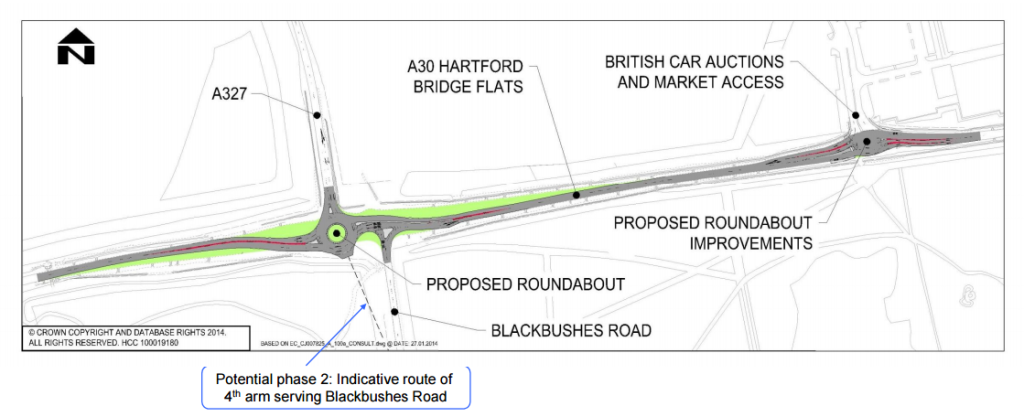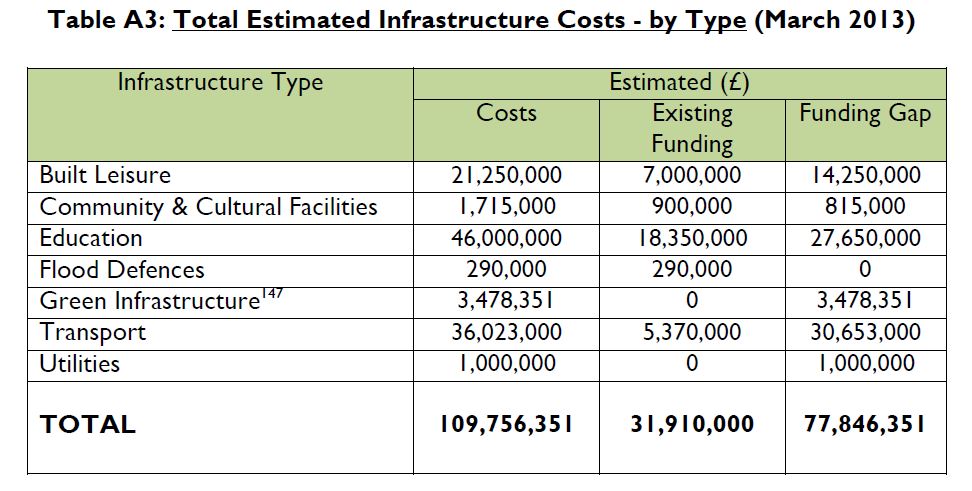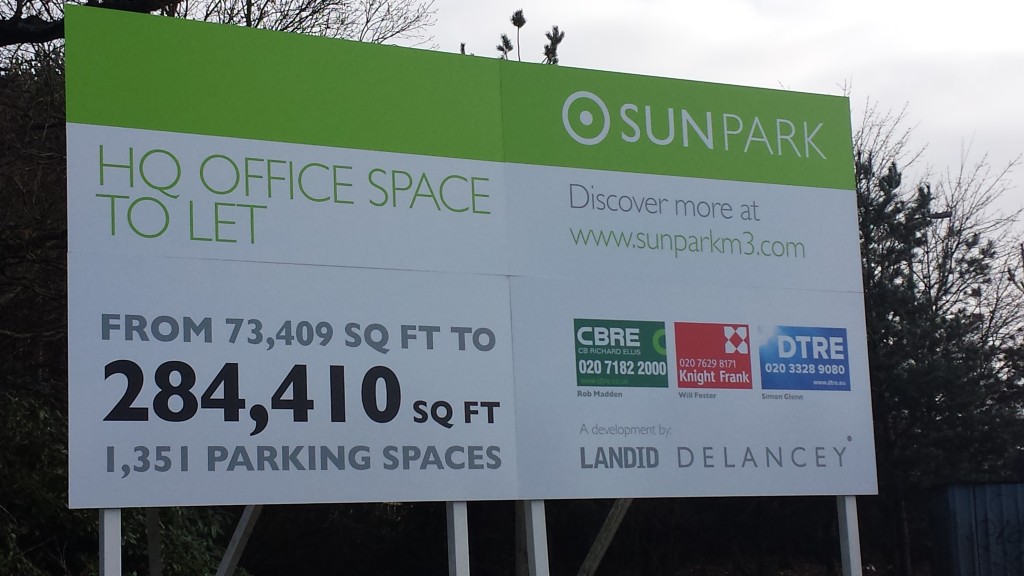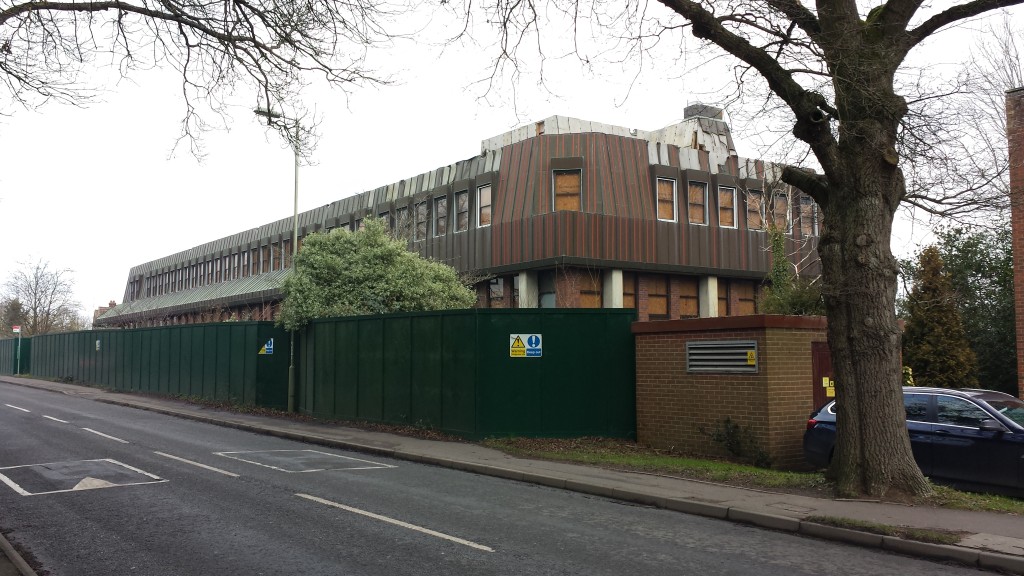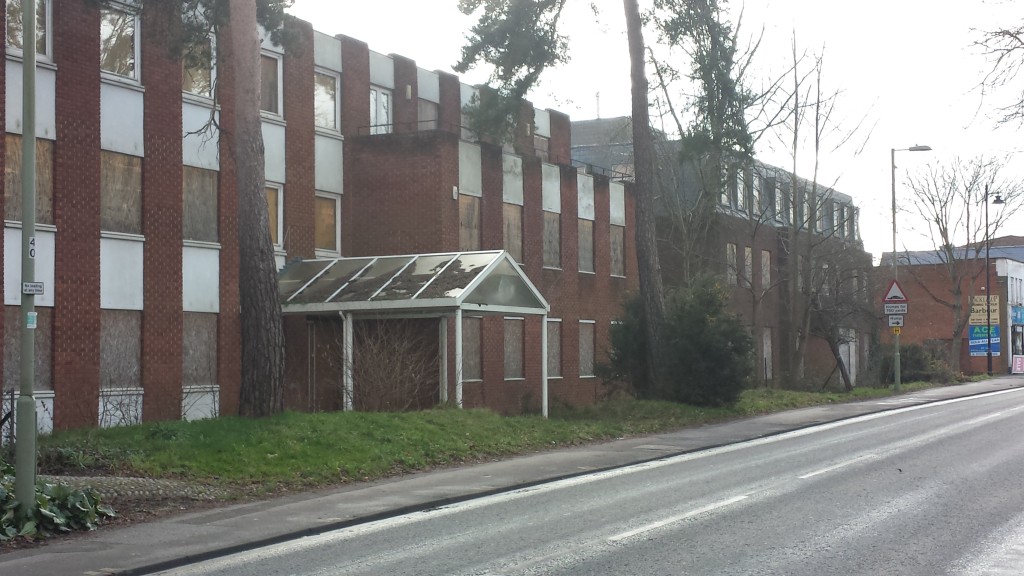
Derelict Offices in Fleet, Hampshire
Back in November Hart Council insisted (p15) that the brownfield capacity for the district over the next 20 years was around 700-750 dwellings. However, a number of recent developments show that this is assumption is incorrect and the available capacity is much larger and we could meet all of our remaining housing allocation through brownfield development alone.
| Location | Number of Dwellings |
| Guillemont Park Phase 1 (not included as brownfield site in SHLAA) | 150 |
| Guillemont Park Phase 2 | 320 |
| Ancells Farm, Fleet | 370 |
| Bartley Wood, Hook | 200 |
| Fleet Road, Fleet | 220 |
| Bramshill House | 350
|
| Fleet Police Station | 50 |
| Extra dwellings at Landata House | 28 |
| Total | 1,688 |
First, planning permission has recently been granted for 150 dwellings at Guillemont Park (former Sun Park site), an increase of 48 over the SHLAA estimate, near the J4a of the M3. In addition, a developer has submitted a preliminary application for a further 320 houses on the same site, bringing the total up to 470 dwellings on just one site.
In addition, Stonegate Homes Limited have produced a report on on the potential capacity for converting offices to residential under permitted development rights in Fleet and Hook. They have come to the conclusion that there’s an extra 790 units that could be delivered quite easily, with further additional capacity available at Ancells Farm.
Furthermore, discussions are underway to deliver about 350 new homes at the former Police College site at Bramshill House.
This brings a total of 1,610 of new brownfield capacity identified since November 2014, more than double Hart’s assessment of the capacity for the 20-year planning period. Notably, none of the 1,610 units above are on sites designated as brownfield in the SHLAA of October 2014, so all of these units are incremental to their original 750 estimate, bringing the current total up to 2,360. We have started a tracker to monitor future progress.
Update: Fleet police station has now become available creating a new brownfield site for perhaps 50 apartments and Landata House has a planning application in place to increase the units by 28, bringing the total up to 2,438 units.
We have already shown that Hart has also under-estimated the available capacity on the sites it has identified because it has used a very conservative density assumption of only 30 dwellings per hectare (dph), whilst separately admitting it could go to 80-160dph in urban areas. This would push its own estimate of 700-750 to 2,800-3,000 units meaning the total residual requirement of 4,000 units is within grasp.
Taken together, the sites in the table above and the potential increase in capacity from the sites Hart originally counted, then the full remaining housing allocation could be met in full on brownfield sites.
There is still no sign that Hart is taking brownfield development seriously enough, so if you would like to join our campaign to change the approach and adopt our 5-point plan, then please sign and share our petition:
Go to Petition




